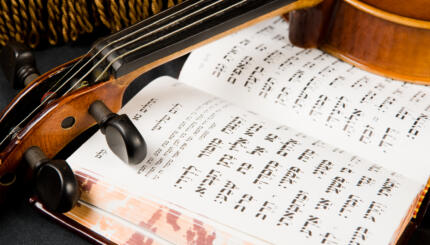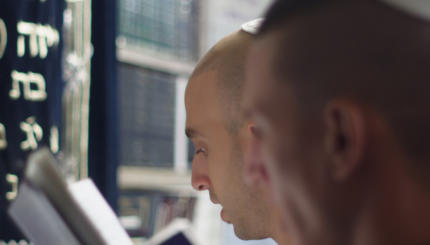Ten years ago, I worked in a summer camp in Israel. The other staff and I prepared a rich set of activities and content to share, but we were frustrated that the kids wouldn’t stop running around long enough for us to deliver anything. It was like trying to pour water into a constantly moving glass.
It’s often the same with God. Kabbalistic and Hasidic teachings teach that there is a constant influx of energy from the Divine into the world, yet we rarely perceive this in our daily lives. Could it be that the sense of lack and longing that so many of us experience is a function of our constantly running around, of not being still long enough to open to what Rabbi Abraham Isaac Kook called the “flowing river of the supernal soul of life.”
The Amidah prayer is the place for this receiving, for the meeting of our human yearnings and God’s life-giving waters. The Amidah is the centerpiece of Jewish prayer, traditionally recited silently, three times a day, while standing still.
The stance of this prayer is rooted in the Bible, which records that the patriarch Abraham “got up early in the morning to the place where he had stood.” (Genesis 19:27) Standing contrasts with moving, and the word amad (“stood”) can also be translated as being still. This reading teaches us that the first dimension of prayer is to become still.

Help us keep Jewish knowledge accessible to millions of people around the world.
Your donation to My Jewish Learning fuels endless journeys of Jewish discovery. With your help, My Jewish Learning can continue to provide nonstop opportunities for learning, connection and growth.
As the mind can continue racing even when the body has become still, it is helpful to bring attention to the stillness of the body, to the release of the outbreath, to the simple contact between the feet and the ground and let the mind begin to align with presence. From a place of presence there can be intentionality. We can open to the deeper currents of our soul and the seed potentials that await our activation.
The central part of the weekday Amidah consists of 13 blessings, each of which has a particular quality:
- Honen Hada’at (Who favors us with knowledge): Open, simple presence of awareness
- Harotzeh Bit’shuvah (Who longs for repentance): Longing for closeness and alignment with core purpose
- Hamarbeh Lis’loach (Who is ever willing to forgive): Love and belovedness of forgiveness and grace
- Goel Yisrael (Redeemer of Israel): Power and discernment
- Rofeh Holeh Amo Yisrael (Who heals His people Israel): Healing and release
- M’varech Hashanim (Who blesses the years): Abundance of blessing
- M’kabetz Nidchei Amo Yisrael (Who gathers together the dispersed of His people Israel): Gratitude and joy of togetherness and integration
- Ohev Tzedakah Umishpat (Who loves righteousness and judgment): Passion of care and connectedness
- Shover Oyvim Umachniyah Zaidim (Who breaks enemies and humbles the arrogant): Wonder and inclusivity of transcending separateness
- Mish’an Umivtach Latzadikim (Who supports and trusts the righteous): Compassion and solidity of deep rootedness
- Boneh Yerushalayim (Who builds Jerusalem): Mutuality, love, and openness of fraternity
- Matzmiach Keren Yeshua (Who flourishes the glory of salvation): Strength and salvation of inspired vision
- Shomea T’fillah (Who hears prayer): Freedom and fulfillment of living in the flow of life
For each of these blessings, it’s possible to feel into its quality. Let yourself remember a time in life when it was really present, or fantasize what it would be like to live in world saturated with that quality. Notice what feeling arises. Who are you when these qualities are alive in you?
As we pray in this way, it becomes possible to let such realities take root within ourselves before they have become manifest without. In this way, the Amidah connects us to the ultimate Creative Power.
Prayer may be likened to gardening, the daily soul tending through which, rooted in fertile soil of the soul and nourished by the flowing waters of life, we may fulfill the vision espoused in Psalms: “Planted in the house of the Divine … they will flourish”.
Daniel Yoel Cohen is a therapist and teacher living in Jerusalem. He teaches with Or HaLev: Center for Jewish Spirituality and Meditation and runs experiential pilgrimage trips to Israel focusing on life of the spirit. The author would like to acknowledge the teachings of Rav Daniel Kohn at Yeshivat Sulam Yaakov in Jerusalem, which informed this essay.



